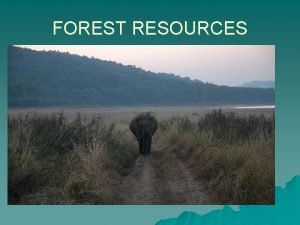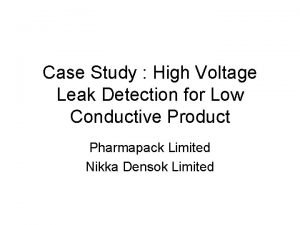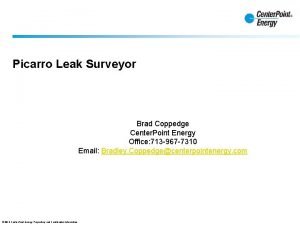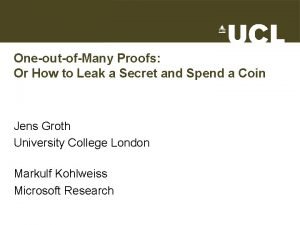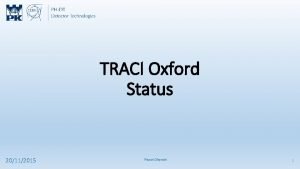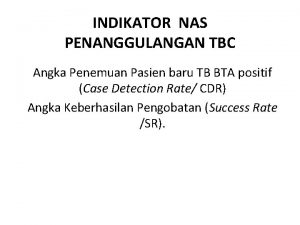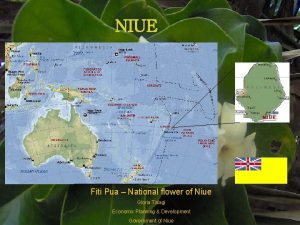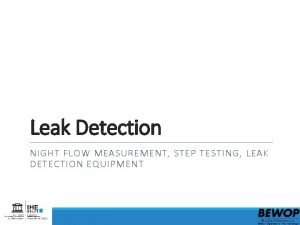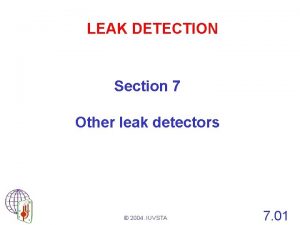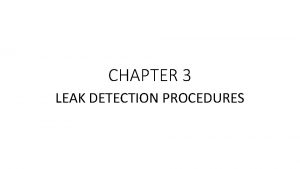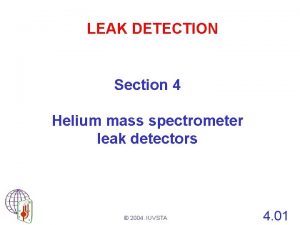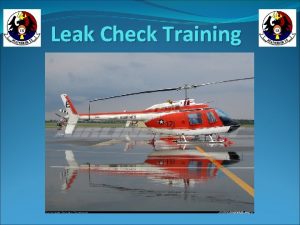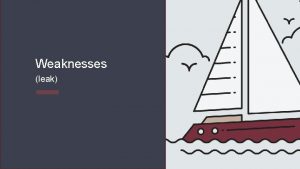Case Study Leak Detection Program On Niue Islands











- Slides: 11

Case Study Leak Detection Program On Niue Island’s Water Resource

Vision § To provide good quality, adequate, continuous and a sustainable supply of water to the people of Niue Island.

Niue Island Water Resource § Niue’s public water supply is dependent upon an underground freshwater reserve. There is no surface water on the Island. § The groundwater resource consists of a ‘lens’ that lies 60 meters below ground level and this is floating on the sea water. Less porous limestone on the outer edge of the island restricts lateral flow of fresh water into the sea. § The water quality of the lens is naturally suitable for drinking and it is piped untreated to all villages. About 85% of the water pumped is for domestic use, 10% for agriculture use and 5% is available for industrial use. Due to the fact that Niue is facing a population decline, consumers are not charged for water use.

Issues on Niue Island Water Supply § Water Supply is unreliable §Water Demand exceeds supply § All Water Pumps working at full capacity – possibility of over pumping § Public reservoir remains empty leading to water being supplied direct to consumers; vulnerable during cyclone seasons. § High power consumption cost for all pumps operating 24 hrs

Con’t § Insufficient water reaching many end of the line consumers § Waste and sewage disposal systems inadequate § Inexperienced workforce in the Water Supply Division § Lack of Maintenance § Lack of Regulation and Policies on Water resource § Lack of funds to carry out the operation

Issues were Address by§ Monitoring power consumption on all water pumps § House to house Inspection around the Island repairs to all leaking water fittings § Installation of Float Valves on household water tanks to prevent overflowing § Installation of Automatic Float Valves on Public Water Tanks § Repair leaking water fittings on Public water Supply System

Main Contributor to Water wastage Source of leakage found on initial leak detection program 1997/1998 Taps Toilet cistern Domestic pipe-work Overflowing domestic tanks Overflowing village reservoir Leakage on Public Water Supply System Total number of leakage identified and repairs 661 208 207 35 9 5 Estimated percentage of total water wastage 35 30 10 5 15 5 As shown above Leaking Taps and running toilet cistern were the main contributor of water wastage.

Monthly Power Consumption Cost on All Water Pumps in Two Years Since Program Stated

Outcome § Savings in annual power consumption was in excess of $50, 000. 00, Also it reduce fuel used for generating electricity. § Increase the Operational life of all pumps § Water Reservoir were full and the water supply to consumers is reliable; the reservoirs can supply consumers up to three day if pump fails § The results of the work done has been used as a tool for awareness programs

On-going Strategy to maintain the System § Maintain monitoring of monthly power consumption on all water pumps § Maintain monthly preventative maintenance program § Continue with fast response to report of leaks from public § Continue with community awareness programs

Major Outstanding Issues on Niue Water Resource § Creation of Water Utility GIS- Currently undertaken and is not completed § Monitoring of the Water Quality § Modeling for sustainable catchments yieldsidentify the quantity and the direction of the outflow § All of the above requires funding and expertise to be carried out.
 Case study on deforestation in andaman and nicobar islands
Case study on deforestation in andaman and nicobar islands High voltage leak detection principle
High voltage leak detection principle Picarro leak detection
Picarro leak detection Secret leak detection
Secret leak detection Pawel okonski
Pawel okonski Study island games
Study island games Best case worst case average case
Best case worst case average case Channel islands nursing program cost
Channel islands nursing program cost Project failure case study
Project failure case study Rumus case detection rate
Rumus case detection rate National breast and cervical cancer early detection program
National breast and cervical cancer early detection program National breast and cervical cancer early detection program
National breast and cervical cancer early detection program
